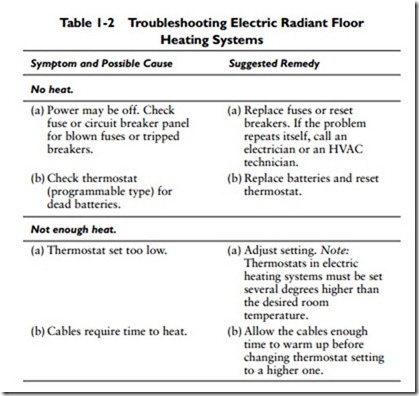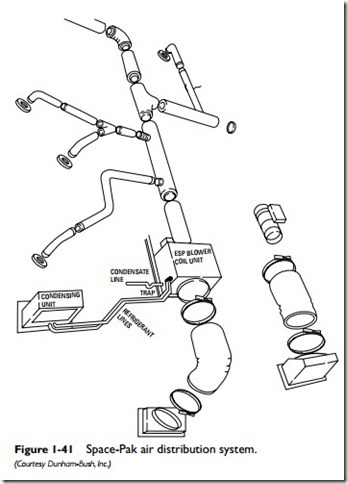Troubleshooting Electric Radiant Floor Heating Systems
Caution
Never attempt to service or repair the electric controls inside an electric furnace cabinet unless you have the qualifications and experience to work with electricity. Potentially deadly high voltage conditions exist inside these furnace cabinets. Refer to
Cooling for Hydronic Radiant Floor Systems
Hydronic radiant floor heating systems are capable of providing both heating and cooling independently of air movement. For the heating cycle, hot water is circulated through the pipe coils. For the cooling cycle, cold water (above the dew point) is circulated, and the heating cycle is reversed. By keeping the water temperature above 65°F, harmful moisture condensation is avoided.
Radiant panel cooling results only in the removal of sensible heat, and there is sometimes an uncomfortable feeling of dampness. As a result, a separate means of dehumidification is often necessary. Often this can be quite expensive because it may require the installation of a separate dehumidification unit and round flexible air ducts to the various rooms and spaces in the structure.
A common and effective method of cooling a structure equipped with a hydronic radiant floor heating system is to add forced-air cooling. There are several very efficient add-on cooling systems available
for use with radiant heating. One of the more commonly used ones is the Unico air-conditioning system (see Figure 1-41). It consists of one or more chillers to move the chilled water throughout the house. Air handlers transfer the cold air to the interior rooms and spaces. The cool air travels from the air handler to the rooms and spaces inside the structure through small, round, flexible ducts.

